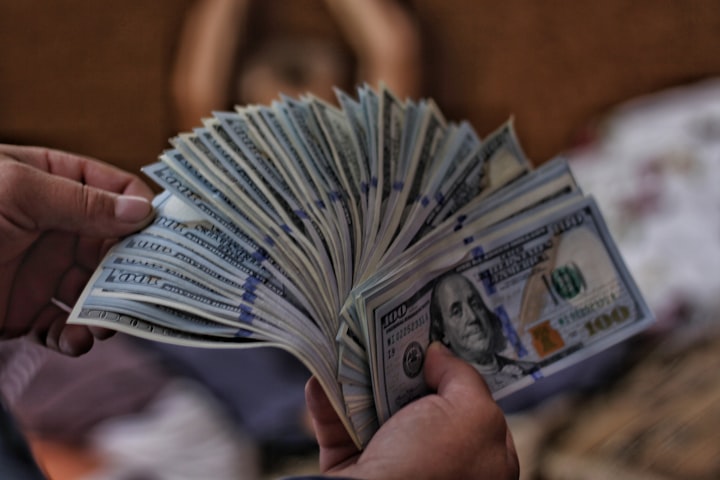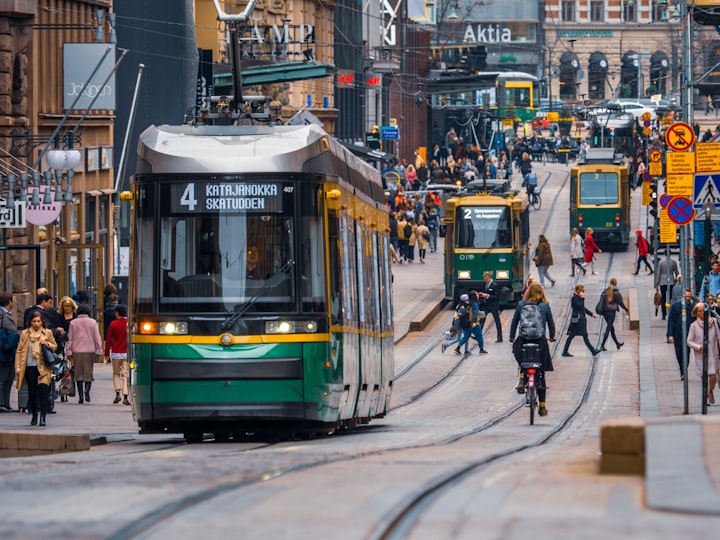Living With 50% Inflation
What it's like, how it developed, and will it happen in the United States

I moved to Argentina in October 2009, when the country’s inflation rate had just started to rise. Through the following decade, the inflation has usually hovered between 25% and 30%, rising to around 50% in the past couple of years. Just this September, the inflation rate was 3.5%. In one month.
Now, it’s been a major issue in elections for both populist and non-populist governments, and the only consensus seems to be that it’s impossible to fix. It’s become a structural problem, a part of the economic reality everyone accepts as a given.
I’ve seen this become an issue in the American political world lately, as well. The reactivation of the economy has taken US inflation to 6.2%, stoking fears of the situation getting out of control. But is this going to happen in the United States, and what is it like to live in a country with runaway inflation?
Here’s a little taste of the populist hellscape we live in here, and the reasons why it’s happened. I’ll also give you my reasons to why I don’t think something like this would happen in the US.
A high-inflation reality
I’ll explain what it’s like to live in a country with 50% inflation with a couple of examples from real life.
Rent
Inflation is very evident in the rental market, and for most of my time here, the laws regulating it barely even considered the tenant’s rights. When you signed a contract, always for two years at a time, the terms were stipulated as the owner and the real estate agency wanted. And they always took into account the projection of inflation, trying to protect the owner’s interests.
It’s been common, all through this time, to have a 15% increase every six months. The last time my contract ended after its two-year period, I got an immediate 34% increase, with 18% every six months.
If this sounds impossible, you’re absolutely right.
The government did try to regulate the rental market. What happened? Prices skyrocketed, rising at double the speed of the salaries.
I don’t know how much I spend every month. But I also don’t follow how much I’m making, because it constantly changes.
Education
When I was in the university, I paid for my tuition with my Finnish student benefit. The only problem was, the cost kept rising at a rate of about 15% every six months while the peso was artificially anchored to a fictitious value. If my euros gave me a fixed amount of pesos, but my education went up 15% in pesos, my student benefit obviously covered less and less as the years went on.
For those working in Argentina and paying for their education with pesos, the regular raises in salary help pay for it. But pay raises aren’t enough to cover for everything. We’ll get to this a little later.
The same thing happens for primary and secondary education, too. The middle class is accustomed to sending their kids to private schools, because the public ones are generally speaking not great. This, of course, depends on where you live, but the gaps between public and private education do always tend to be major.
But primary and secondary schools even more expensive than university education, and there’s no way to budget for the mid-year increases.
Groceries
I have no idea what anything costs. A couple months ago my big weekly groceries purchase was 2000 ARS, now it’s 5000 ARS. Nothing makes sense.
Add to that the fact that fruits and vegetables are seasonal, so they don’t have stable prices. It’s common for a couple of weeks of cold weather to hike up the price of tomatoes so much that they become a luxury. Tomatoes.
When you’re trying to budget for the month, you have to make strange calculations, even if you have a “good” salary. Do I have money for bananas this month? There’s no way to know how much your food will cost, no real way to budget. That’s why many people buy in bulk at the beginning of the month.
Not knowing what food costs easily leads you to credit card payments at the cash register. And debt. More and more debt to cover for the cost of living.
The current government has just introduced a price freeze on groceries, but they’re more a temporary measure driven by the upcoming midterm election than a real fix. If they last, they’ll likely cause supply shortages, as well as a difficulty to pay salaries. There’s no real fix.
Clothes
I didn’t buy clothes or shoes in Argentina for years, saving all my shopping to when I went back home to Finland. It’s partly because I’m 5'8" and a size M with US size 10 feet, which makes me too big for everything here.
But it’s mostly because clothes have been so ridiculously expensive for most of my time here that it’s been impossible. So expensive that my family couldn’t afford them when visiting me from a high-income country, with their salaries in euros.
Strangely, at moments of high inflation the only thing you can afford are often imported, American brands like Nike. The price of a pair of sneakers comes from its price in USD, and they don’t go up as fast.
Other consumer goods
You buy everything on your credit card in 12 to 24 monthly payments. Everything.
A bicycle or a new phone? 24 payments. A t-shirt? 12 payments. Groceries? Let me see. I think 3 payments, maybe?
The government started big programs with interest-free payments to facilitate buying consumer goods to keep people happy and the economy going, and they have been somewhat successful. But they do nothing to stop the issue of inflation in the long term.
People trust the inflation rate to keep rising, so it’s useful to pay everything in the future. “The last payments will be worth pennies,” I figured a couple of months ago when I was buying myself a new TV. It’s true, but it also furthers this distorted economy.
Salaries
Every year, the government gets into negotiations with the unions on the subject of annual pay raises to cover for the cost of living. You might get anywhere between 25% to 45%, depending on where you work. Some union leaders are better friends with the government, so they’re able to get higher raises.
I’ve worked in the public sector, which has usually meant I’ve been on the lower end. And the raises trickle in, at maybe 5% per month over several months. It’s never enough.
I don’t know how much I spend every month. But I also don’t follow how much I’m making, because it constantly changes. And as salaries go up, so does inflation. It’s an absolute vicious circle, with no chance to get out.
If you’re working informally, you might not get a raise at all. And the thing is, the grey sector of the economy tends to already be the most vulnerable.
I knew an elderly lady who was working as a receptionist for a real estate agent to complement her small retirement. In the span of two years, with an inflation rate well over 30%, she didn’t get a raise. Nothing to cover for the loss of at least 60% of her purchasing power.
Real estate and other expensive purchases
Prices of real estate, cars and even an iPhone are expressed in dollars, because the peso isn’t worth anything. It’s logical: would you sell anything if you knew the money you receive loses half its value in the next year?
You’ll need to get your hands on some USD, but it’s not simple. We’ll get to that in the next part.
Underlying issues
The Argentinian economy is, and has always been, a mess. Here are some of the reasons why.
Government spending
When I got to Argentina, President Cristina Fernández de Kirchner had just ran into her first major conflict with the country’s agribusiness sector a year before. She had also just lost a midterm election.
What did she do to solve it? What every populist does: throw money at the problem. More pay raises, more programs for the most vulnerable populations (which is great, in theory), and much more printing out cash.
So, the government ended up spending much more than in generates, without producing any real change. This is not the same situation as in the US or many European countries, because Argentina doesn’t have anything to back this kind of spending with.
And, you know, corruption at an obscene scale as a part of that spending plan didn’t help the overall economy.
Agricultural economy and slow growth
Argentina’s economy has always been tied to agribusiness, especially primary products. Industrialization has been slow and inefficient.
This means the country is always tied to the fluctuations in the international price of commodities like wheat and soy. When prices go up, it’s a party. But they’ll go down just as quickly, and successive governments haven’t used the money to build infrastructure during the years of fat cows, as they say around here.
In theory, inflation drives consumption. People will buy more now, because they know everything will me more expensive next month. But there’s a point where the lack of predictability will shut down investment.
Due to numerous government restrictions and the difficulty of budgeting, building a new business isn’t easy. If the inflation isn’t enough of a disincentive, government regulations will do the rest of the job. And when you’ve built your business, it’s incredibly hard to keep it up in a country where you can’t trust anything to last more than a couple of months at a time.
Lack of confidence in the peso
People in Argentina have seen so many serious economic crises that they no longer believe the system will get fixed.
The inflation has also gone on for so long that nobody saves in pesos. If you have a little extra, you’re heading straight to the bank to buy yourself some USD. The only thing is, you can’t, because you’re limited to $200 per month, and there are conditions. Also, the government slaps 65% additional taxes to your purchase to discourage you from buying, making the real price of a dollar that much higher.
Of course, there’s a flourishing black market for foreign currency. And when anything politically relevant happens, including elections, people run off to buy more dollars, hiking up the price.
And when the value of the dollar goes up, so does inflation. Because everything you import, from an avocado to a TV set or a microchip, is paid in good ol’ US dollars.
Greed
Yes, of course the greed of the big businesses influences the soaring inflation. They want to make sure they’re still making a good profit, so they’ll continue raising prices at the usual rates.
Politics
There are many reasons for the problem of inflation to have gotten so out of hand, but in the end, it all boils down to a lack of political will to bear the cost, and extreme polarization in the political system.
All governments know that the only way to get out of a structural inflation this high will require some tough decisions. This includes cutting subsidies in places where they aren’t necessary to gradually lower spending, while paying for the deficit with credit. However, Argentina’s political culture is very anti-debt, and extreme polarization means the opposition will take advantage of the situation.
When the non-Peronist government of President Mauricio Macri tried to lead the country in this direction between 2016 and 2019, it faced ferocious opposition to both austerity and taking new foreign debt. The current government has solved this by, again, printing more money, driving more and more inflation.
The cycle goes on and on.
Will the US face hyperinflation?
Will the massive government spending under Biden cause inflation to rise to these kinds of catastrophic levels?
Looking at the causes of hyperinflation in Argentina and elsewhere, I’d say no. I think it’s a momentary issue, driven by the post-COVID reactivation.
There is a warning here for the US, as well: take the issue seriously and address it before it festers and becomes a structural problem.
Now, I understand both Republicans and the people predicting the imminent collapse of the Western civilization won’t agree with me. But I sincerely find it hard to see the number one economy of the world, with much stronger institutions, going Argentina’s way.
There’s one important factor to take into account here: Argentina has never been in the position to make the rules. The United States is.
The US can create growth. With all its (major) problems, it’s still a country that leads the rest of the world, a country with major industries, one that attracts immigration and creates technology and innovation.
Argentina, on the other hand, is the textbook example of a country with major natural resources that have been mismanaged. But the country’s history, like that of much of Latin America, is also one of being exploited by rich countries. Argentina was never able to set the terms, and the decisions of the US, the UK and Europe have always caused major crises here.
But there is a warning here for the US, as well: take the issue seriously and address it before it festers and becomes a structural problem.
When I got here in the early days of double-digit inflation in the Cristina Fernández de Kirchner government, it didn’t help that the government stopped publishing the real inflation rate, developing a new methodology to measure it that gave a number of around 10%. This number was largely made up, and no international analysts took it as reality at least in the last three years of Kirchner’s rule.
Check out the graph below and see the gaps for yourself.
The government also stopped publishing the statistics on poverty growth and crime when those numbers stopped beiing favorable.
This is what happens when populist governments let institutions deteriorate to further their own ends.
But people aren’t stupid, and you don’t get rid of problems by sweeping them under the rug.
Inflation drives poverty. It causes a lack of ability to predict your personal present and future, and is devastating for many families. It doesn’t help incentivize growth in the long term, which makes it harder for governments to stop printing out money to keep people happy.
Take it from Argentina: this is not where you want to be.
This story was originally published by me, on Medium.
About the Creator
Taru Anniina Liikanen
Finnish by birth, porteña at heart. Recovering political ghostwriter. Fiction, relationships, politics, bad puns, popular and unpopular opinions. Occasional dinosaurs, because dinosaurs are the best.







Comments
There are no comments for this story
Be the first to respond and start the conversation.